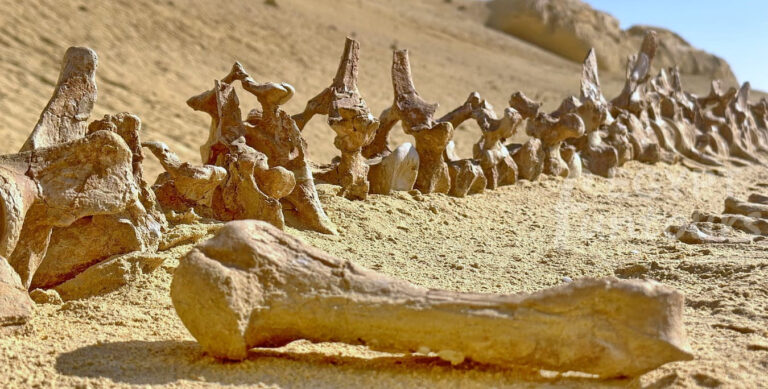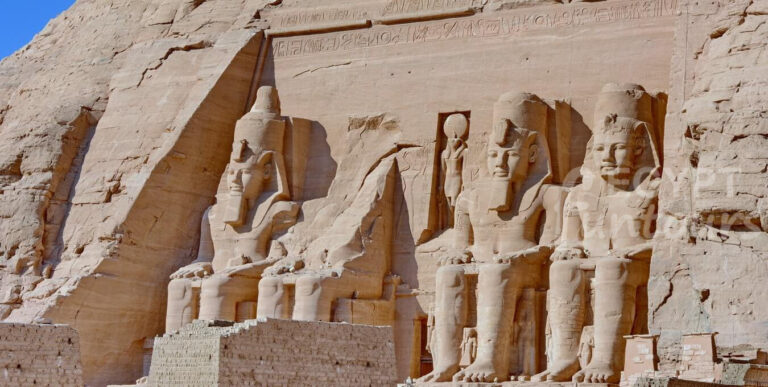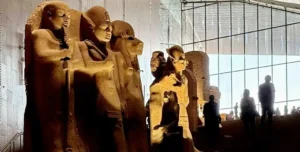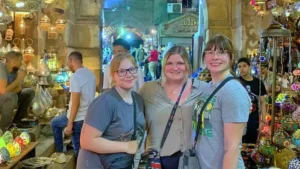Khonsu: Enigmatic Moon God of Ancient Egypt 🌕
Khonsu, a prominent yet often mysterious deity in the ancient Egyptian pantheon, is best known as the god of the Moon. His name, meaning “traveler” or “wanderer,” perfectly encapsulates his celestial journey across the night sky. While primarily associated with the Moon, Khonsu’s influence extended to various aspects of life, including healing, protection, and the passage of time. This article explores the rich history, captivating myths, and profound significance of this fascinating lunar deity.
Origins and Early Worship: A Celestial Journey
The worship of Khonsu dates back to the Old Kingdom (c. 2686–2181 BCE), though his prominence grew significantly during the New Kingdom (c. 1550–1070 BCE). He was particularly revered in Thebes (modern-day Luxor), where he formed a key part of the Theban Triad alongside his father, Amun, and his mother, Mut. His cult centers often coincided with important religious sites dedicated to the Triad, solidifying his role within the powerful Theban priesthood.
The Moon’s Embrace: Khonsu’s Primary Role
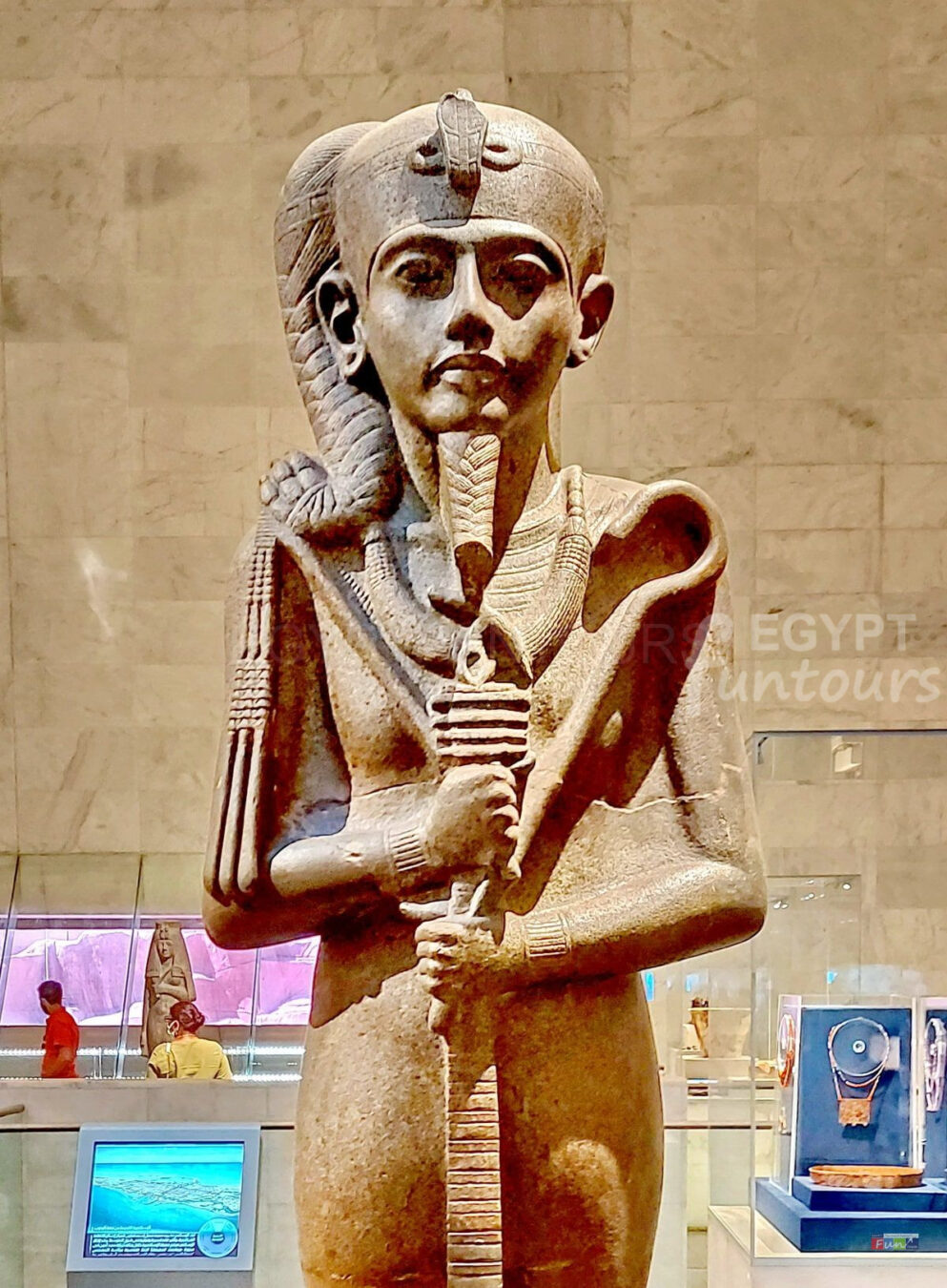
As the Moon god, Khonsu governed the lunar cycle, which was crucial for ancient Egyptian timekeeping and agricultural practices. His phases dictated the rhythm of life along the Nile. Khonsu illuminated the night, guiding and protecting travelers from the darkness. People saw the Moon’s waxing and waning as manifestations of his power, symbolizing cycles of growth, decay, and rebirth. This celestial connection made him a powerful and omnipresent deity.
Khonsu the Healer: Divine Intervention in Sickness
Beyond his lunar associations, Khonsu was deeply revered as a god of healing. Many inscriptions and papyri describe his ability to cure diseases and ward off evil spirits. A famous tale, the “Bentresh Stele,” recounts how the Egyptians sent a statue of Khonsu to a foreign land to heal a princess from a demon. This narrative highlights his reputation as a potent source of divine intervention and a bringer of well-being. People often prayed to Khonsu for relief from illness and for the protection of their families.
Guardian of Time and Fate: Khonsu’s Broader Influence
Khonsu also held sway over the passage of time and, to some extent, fate. As the “traveler,” he moved through time, marking its progression. Some texts link him to the measurement of time, particularly the months. He also helped with fertility and protected the innocent. This broader influence showcases his multifaceted nature and highlights his importance in the daily lives of ancient Egyptians.
Iconography and Symbolism: The Youthful God
God Khonsu was typically depicted as a youthful male figure with a sidelock of hair, a symbol of childhood in ancient Egypt. He often wore a tight-fitting garment and carried a crook and flail, symbols of kingship and divine authority. His most distinguishing features were the crescent moon and full moon disk atop his head. Sometimes, he appeared with the head of a falcon, associating him with Horus and the sky. This imagery emphasizes his youthfulness, his lunar connection, and his royal power.
The Temple of God Khonsu at Karnak

The most significant temple dedicated solely to Khonsu is located within the vast Karnak Temple Complex in Luxor. This well-preserved temple, built primarily during the Ramesside period, features intricate reliefs depicting Khonsu with other deities and pharaohs. It served as a vital center for his worship, where priests performed elaborate rituals to honor the Moon god and seek his blessings. The temple’s grandeur reflects the high esteem in which Khonsu was held.
God Khonsu in the Theban Triad

As a member of the powerful Theban Triad, Khonsu held a revered position in the religious landscape of ancient Egypt. His father, Amun, was the king of the gods, and his mother, Mut, was a prominent sky goddess. This familial connection further elevated Khonsu’s status and integrated him into the heart of the state religion. The Triad represented a divine family unit, symbolizing creation, fertility, and renewal, with Khonsu embodying the light and rhythm of the night.
Khonsu’s Connection to Other Deities: Lunar Alliances
Khonsu sometimes merged with other deities, reflecting the fluidity of ancient Egyptian religious beliefs. He occasionally shared his identity with Thoth, another lunar deity and god of wisdom, suggesting they shared a domain over knowledge and the night sky. His connection to Ra, the sun god, as the “light of the night,” also highlighted his importance in the cosmic order. These alliances show his adaptability and his integral role within the complex web of Egyptian mythology.
The Enduring Legacy of God Khonsu
While the polytheistic worship of Khonsu has long since ceased, his stories and imagery continue to captivate. He represents the ancient Egyptians’ deep reverence for celestial bodies and their understanding of the Moon’s profound impact on life. Khonsu’s legacy, particularly his association with healing and time, offers a glimpse into the spiritual and practical concerns of a sophisticated civilization. His presence in ancient texts and monumental architecture reminds us of the enduring power of myth and the allure of the enigmatic Moon god.
The Illuminated Path of Khonsu
In summary, Khonsu was a complex and powerful deity, embodying the various aspects of the Moon, healing, and time. His role in the Theban Triad and his dedicated temples underscore his significant standing within the ancient Egyptian pantheon. From guiding travelers by night to curing the sick, Khonsu offered protection and hope to his devotees. His captivating myths and iconic imagery continue to illuminate our understanding of ancient Egyptian culture and their reverence for the celestial world.

